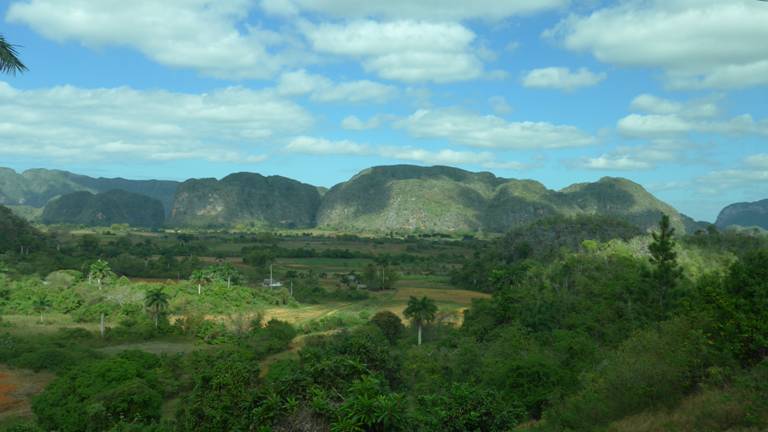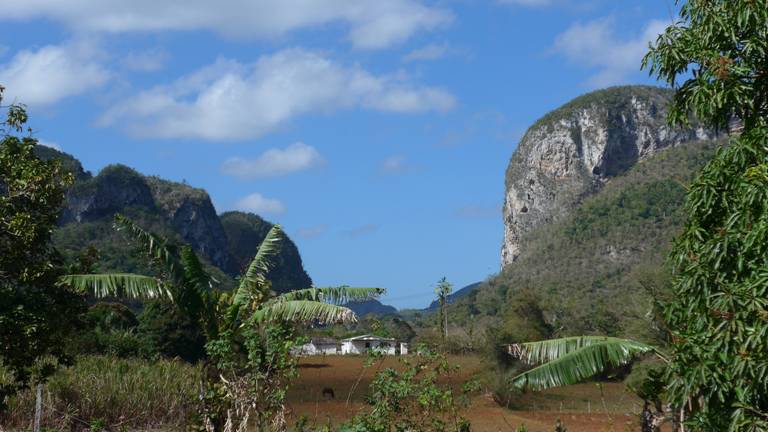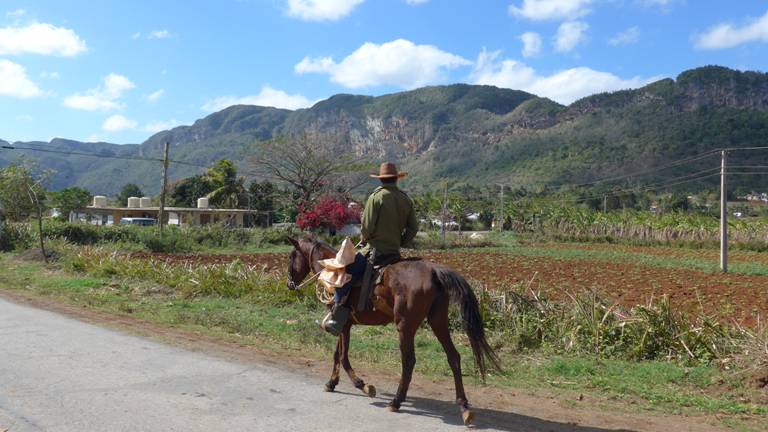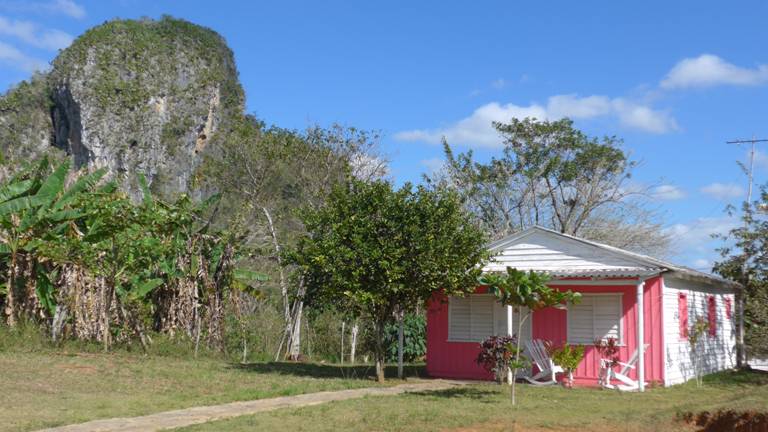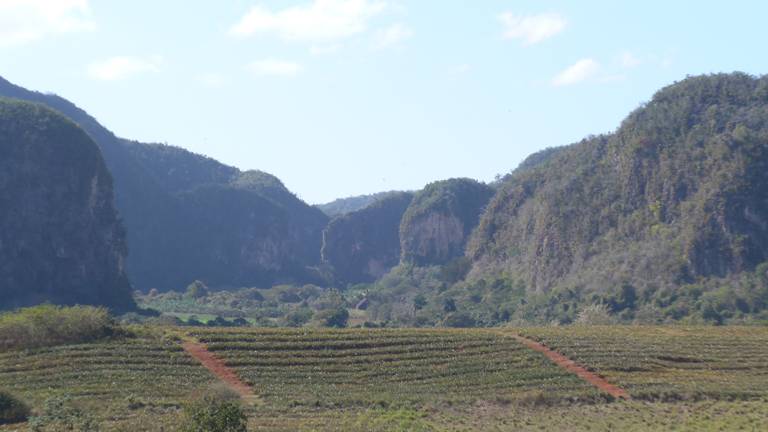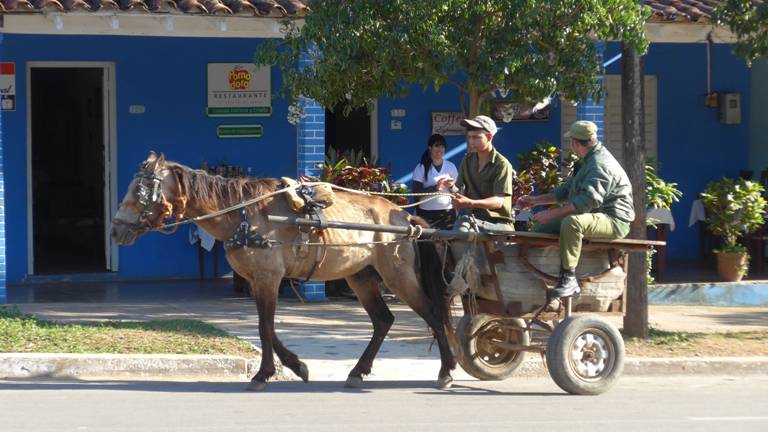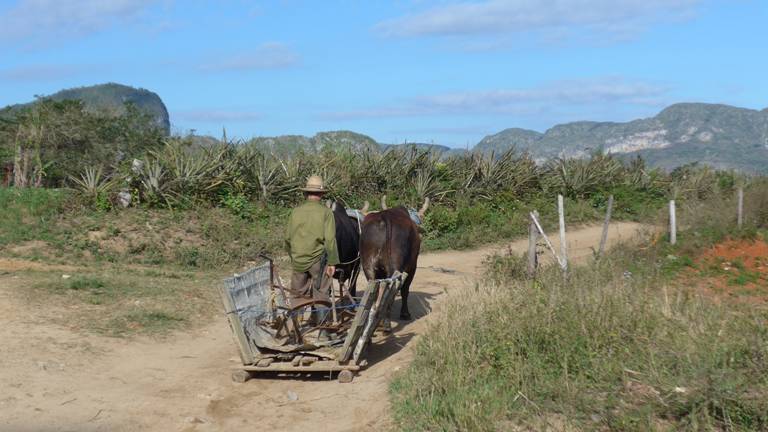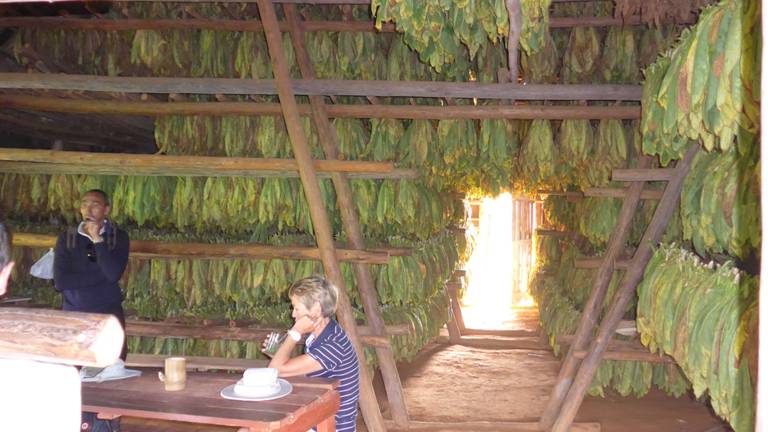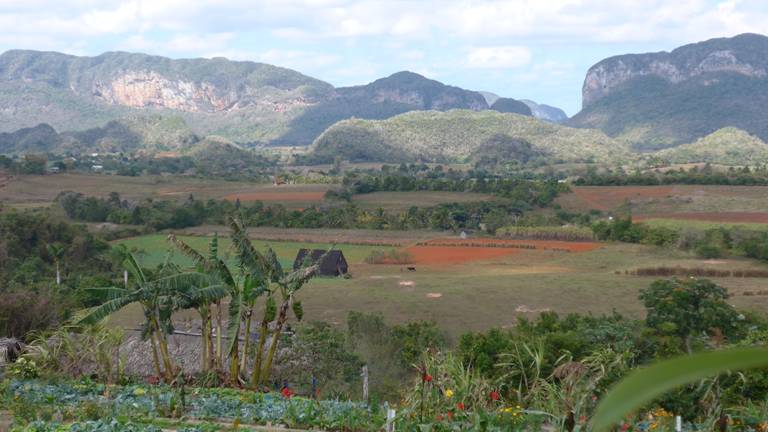Cuba Part II

|
Further dispatches from Cuba where we are into our 4th week and at the moment sitting out a wild weather system which has delayed our plans to move on to Mexico. We were all set to leave yesterday morning for the 2 day passage, but for a last minute visit from the dockmaster. Just as were about to cast off, he appeared looking very anxious with dire warnings about very strong, cold winds and rough seas. We thought the forecast had looked bearable, but decided to bow to local knowledge and sit it out. First mate at least is quite glad now as it is wild out there and raining hard to boot, whilst we are cosy below with a “nice cup of tea”.
Since our last post we have been on two rewarding visits to other Cuban gems, both Unesco World Heritage Sites. The first was to the Viñales Valley, a 3 hour bus trip west of here where the stunning scenery is the main attraction. The wide, fertile valley is studded with dramatic rocky outcrops called “mogotes” (which means haystacks) and the valley floor is carpeted with crops, especially tobacco. We stayed in a private “casa” in the small village of Viñales in the heart of the valley which was very pretty and unspoilt despite its popularity with tourists. We hired bikes on our first afternoon and passed cowboy types on horseback on the country lanes as well as lots of horses and carts and a few ancient tractors. The second day our host’s son took us on a walking tour into the peaceful “Valle del Silencio” where we stopped at a tobacco farm. We were shown how various different types of leaves, hanging in racks in the distinctive tobacco sheds, are chosen for different parts of the cigar. Over a mojito (at 10am!) we then watched a cigar rolling demonstration and were offered one to smoke. Needless to say, Lindsay declined, but David bravely had a go! The end of the cigar was first dipped in honey which apparently made for a very strange taste in the mouth. More wandering down muddy, red soiled lanes and we came to another “finca” now set up more to entertain visitors than grow crops. We tried a different, guava based rum cocktail there and were shown what various local crops such as manioc, sweet potato and coffee look like in the fields. We ate crisps made from another root vegetable called malenga which is a new one on us. Our tour ended at an eco-farm at the top of a hill with great views of the valley, but not before our young and very unofficial guide had changed directions several times to avoid the authorities. They were out and about to catch the clearly illegal local guides! Back in the village later, we enjoyed some lively music in a bar where we had watched a salsa lesson going on earlier. We finished the evening in another bar which had only been open a couple of weeks and was surprisingly sophisticated for the area. It showed how fast Cuba is changing as entrepreneurial types are given the chance to start a small business in the new, freer climate under Raul Castro.
Breakfast in a casa always includes a glass of freshly squeezed fruit juice and the pineapple one we had on our last morning was quite wonderful. We have also had papaya and guava on our travels and have since learned their “medicinal” properties. Apparently papaya (and mango) will aid a visit to the toilet whilst guava is good for bunging you up – useful information which was too late for poor D whose gut suffered the consequences!
Viñales was a quite wonderful demonstration of age-old farming methods with wooden ploughs pulled by oxen and even some sled like wheel-less carts to cope with the uneven muddy terrain. One could imagine that medieval Europe looked a bit like this! On the way back to Havana, our bus drove through the town of Piñar del Rio where we saw our first horse buses on the main streets. No wonder Cuba has been named “the only country in the world that is developing in a sustainable manner”.
On the return journey our bus guide pointed out a very large range of buildings not far from the marina here which were a medical school for students from all over the world. Cuba is renowned for its medical training and the numbers of doctors it has sent to help other poor countries. That same evening we met two young black South Africans from that very faculty who happened to be strolling past our boat. We ended up having a wonderful conversation with them for a couple of hours and really enjoyed learning about them and their views on Cuba.
Viñales valley with its distinct “mogote” hills:
View between the “mogotes”:
A local:
Typical house (note no glass windows):
Fertile farmland:
Ancient farming methods:
Pretty Viñales town:
Typical local transport:
Out to the fields with oxen drawn “sled”:
In a tobacco drying shed:
View over the valley from eco farm, with tobacco shed mid picture:
A local bus:
Viñales town in distance:
A horse-drawn bus in Piñar del Rio:
|
